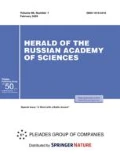You may prove anything by figures.
Thomas Carlyle
References
P. O. Seglen, “Evaluating Biology: A Scientometric Study of a University Biology,” Dep. NIFU. Skriftserie 6 (2001), http://www.nifustep.no/content/download/1096/12005/file/Skriftserie6-2001.pdf.
P. G. Altbach, The Tyranny of Citations, http://inside-highered.com/views/2006/05/08/altbach.
Quantitative Indicators for Research Assessment—A Literature Review (Research School of Social Sciences), http://repp.anu.edu.au.
I. Niiniluoto, “Scientific Progress,” Synthese 45, 427–464 (1980).
I. Niiniluoto, Is Science Progressive? (D. Reidel, Dordrecht, 1984).
“Scientific Progress,” in Stanford Encyclopedia of Philosophy (2002), http://plato.stanford.edu/entries/scientific-progress.
G. H. Whitehouse, “Citation Rates and Impact Factors: Should They Matter?,” Br. J. Radiol. 74, 1–3 (2001).
Science, Technology and Innovation Indicators—A Guide for Policymakers, Ed. by K. Smith, http://www.step.no/old/Projectarea/idea/Idea5.pdf.
Research Evaluation and Policy Project Research School of Social Sciences. Quantitative Indicators for Research Assessment—A Literature Review, http://repp.anu.edu.au/Literature%20Review3.pdf.
“Thomas Samuel Kuhn. 1922–1996,” in Stanford Encyclopedia of Philosophy, http:/plato.stanford.edu/entries/thomas-kuhn/.
G. Klein, “Perspectives in Studies of Human Tumor Viruses,” Front. Biosci. 7(1) (2002).
D. Adam, “Citation Analysis: The Counting House,” Nature 415, 726–729 (2002).
“Citation Data: The Wrong Impact?,” Nat. Neurosci. 1, 641–642 (1998).
P. O. Seglen, “Citation Rates and Journal Impact Factors Are Not Suitable for Evaluation of Research,” Acta Orthop. Scand. 69(3) (1998).
“Recommendations of the Commission on Professional Self-Regulation in Science. Proposals for Safeguarding Good Scientific Practice,” D-tsche Forschungsgem (1998), http://www.dfg.de/aktuelles_presse/reden_stellungnahmen/download/self_regulation@98.pdf (p. 8) (accessed Sep. 2002).
Quantitative Indicators for Research Assessment—A Literature Review (Research School of Social Sciences), http://repp.anu.edu.au.
S. Brenner, Science 281(5373), 53 (1998).
E. Garfield and A. Welljams-Dorof, “Citation Data: Their Use As Quantitative Indicators for Science and Technology Evaluation and Policy-Making,” Sci. Public Policy 19(5) (1992), http:/www.garfield.library.upenn.edu/papers/sciandpubpolv19(5)p321y1992.
Author information
Authors and Affiliations
Additional information
Original Russian Text © E.D. Sverdlov, 2006, published in Vestnik Rossiiskoi Akademii Nauk, 2006, Vol. 76, No. 12, pp. 1073–1085.
Rights and permissions
About this article
Cite this article
Sverdlov, E.D. Citation mirages. Her. Russ. Acad. Sci. 76, 530–541 (2006). https://doi.org/10.1134/S1019331606060037
Issue Date:
DOI: https://doi.org/10.1134/S1019331606060037

